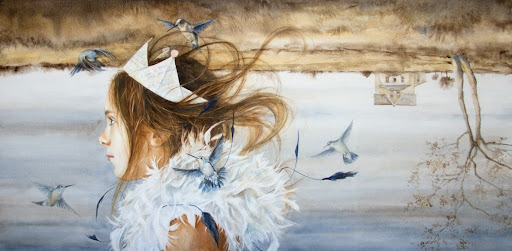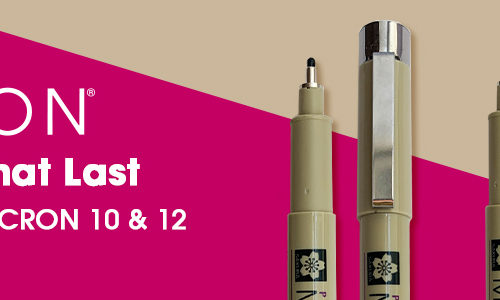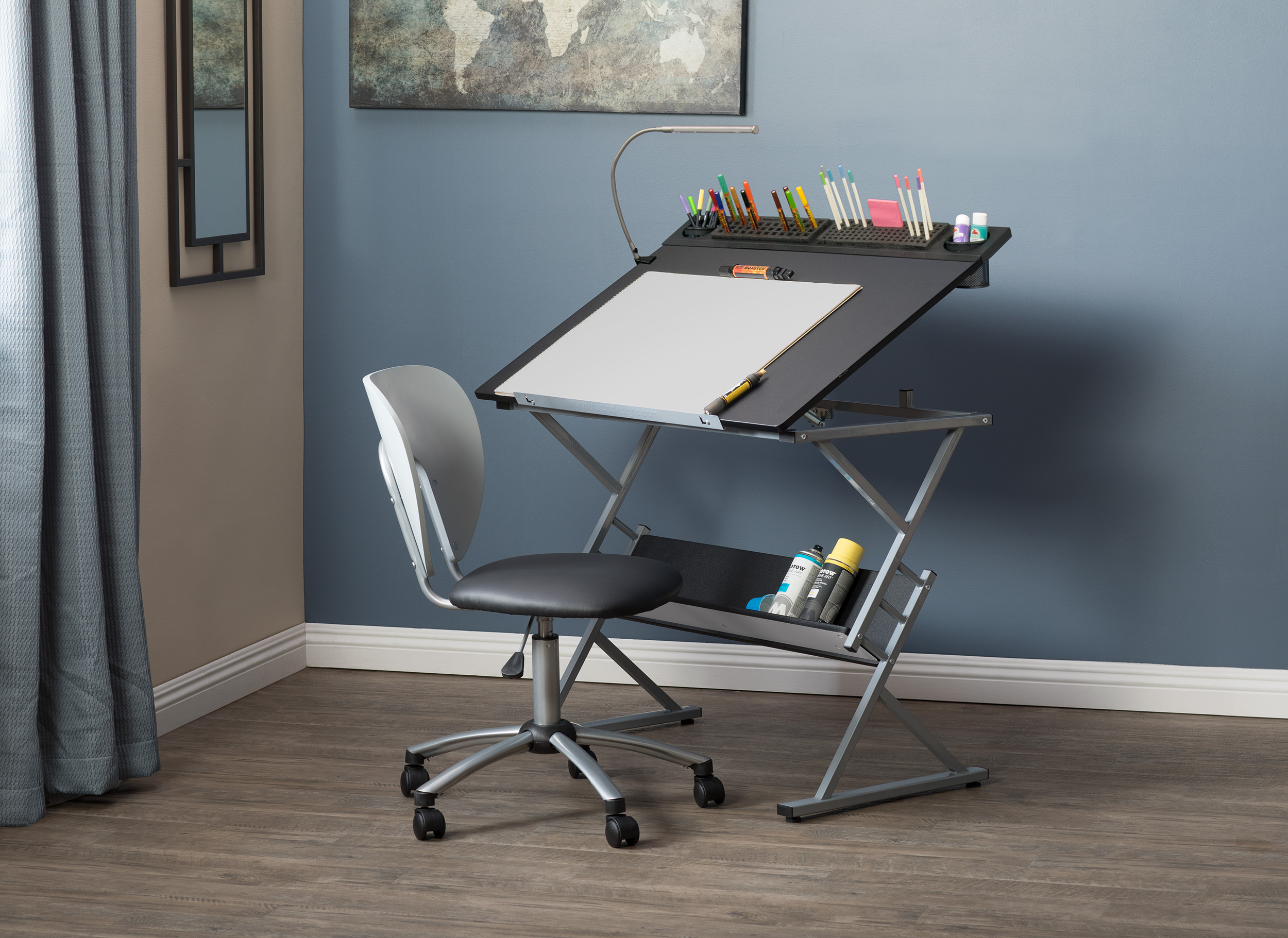Aquabord artist Daniela Werneck is a realistic watercolor painter based in Houston, TX, whose work combines the most traditional watercolor methods with a contemporary look.
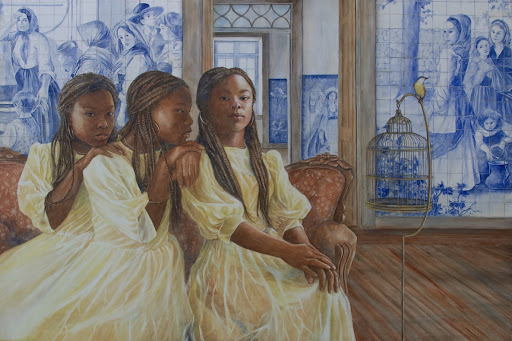
1. Before moving to Australia, you were born and raised in Brazil and worked at an architecture firm as an interior designer. Tell us how this move to Australia helped set your painting career in motion.
I already painted commissioned portraits in Brazil, but that wasn’t my profession. It wasn’t my main source of income. I did it for an extra income. When I arrived in Australia with two small children, my life changed a lot. I didn’t have my job anymore; I didn’t speak English. Our move to Australia was a new beginning in my life. I spent more time with my children. I started to take care of the house, and it was a very different reality from the one I had in Brazil, where I barely saw my children. But because I was used to working a lot, I felt empty when I had time for myself. I missed my work, and since I couldn’t work because of the language I didn’t speak, I started to paint more than I used to, and I did it just to fulfill me. I painted many of my friends’ children while I was there.
At that time, I also started sewing; using my knowledge of architectural design, I created patterns for handbags which I completely handmade and then embroidered portraits on them.
When I got here to Australia, and the commissions started coming in, it was the first time I thought I could become an artist, but first, I wanted my paintings to be critiqued by someone who knew the technique. I wanted to hear from someone in the field if my paintings were good or not. So, one day I looked online for a watercolor contest and found an international one from a society in Texas. I had no idea what terrain I was walking on because this was my first time hearing about these societies. But I entered. I got in. And I won. Then I tried another one, and the result was even better. This was the moment that I realized that I am an artist.
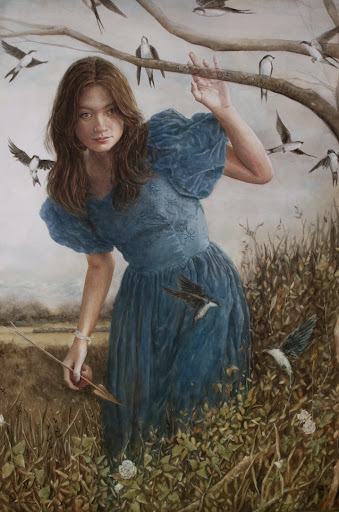
2. Your artwork exhibits exceptional storytelling. When you start a painting, do you have a particular story in mind for your subjects?
In only a few cases, especially the ones related to foster children. In most cases, the idea of a painting starts when I’m looking at the photos I take of my models. I open all the photos I like in Photoshop and begin my jigsaw puzzle. Pieces of several images of the same model or between different models are used to create a composition. Then I let the image that is forming create the story.
But there are paintings where I like the model’s body language in the photograph, and I really want to paint it the way it is. In these cases, I start painting the model and let the paint guide me to the end.

3. Your “alone” series is dedicated to children in the Foster Care System and aims to create awareness through your watercolors. Can you tell us how this originated and your personal perspective on the significance of adoption?
My family and I started the adoption process with DFPS/CPS (Department of Family and Protective Services/Child Protective Services) in 2015 after we settled here in the USA. Adoption was always something that I wanted. As we are a family of four, we financially could not adopt siblings, which already limited our chances. We had two boys, so we were trying to find a girl between 2-12. But that was another obstacle because girls in the foster care system were sexually abused by their own family members a large percentage of the time. In that case, the system usually avoids boys in the adoptive family, which is understandable. We applied nationally for nearly 90 girls. It was very stressful. Not only the matching process but also the American culture, which was new to us.
In 2016 I started to be frustrated with the whole situation and overwhelmed by the stories I had received so far that I did what became my first painting of the “Alone” series. I did this for myself, to help me release some of my stress and expectations. Then I did the second, third, and so on. In the same year, I opened a studio in downtown Houston with a fellow artist, Danyelle Lakin, and I brought these pieces to hang there. The community usually has open Saturdays making the area crowded with people, and it was common to have someone crying in my studio because of these paintings. In these moments, I realized I could be making more of them. I could give voice to these children, and I could be painting for others and not only for me. So, I kept painting them between commissions nonstop.
We fostered a 10-year-old girl in 2018, she lived with us for a few months, but due to incompatibility between her and our family, she was removed from our home. It was the saddest day of our lives. And that experience was something we definitely don’t want to experience again, forcing us to close our home to the system.

4. How does your Portuguese ancestry influence or contribute to your work?
After the girl was removed from our house, I fell into sadness and made three paintings inspired by her and her story. It was like she was still here with me. Still, I couldn’t live in the past and feed the sadness, so we took a trip to Portugal, where part of our family lives. This connection with the past, my grandparents’ past, was like getting back to my roots. It made me get up again and change my perspective on my paintings. Then I started to include other elements in the paintings, like the tiles and the swallows, that are very Portuguese and common in Brazil.

5. Butterflies and birds are frequently represented in your work. Do they have a symbolic meaning?
Yes, basically freedom. But depending on the painting, it can also be love, beauty, family, and resilience.
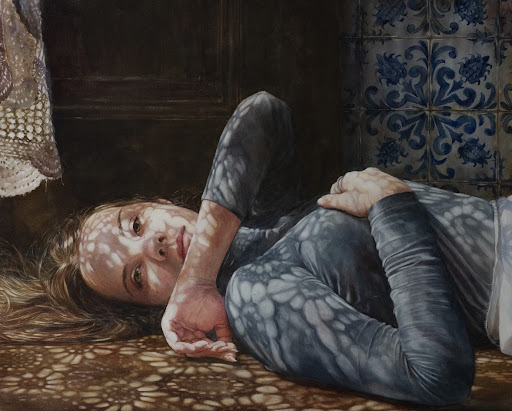
6. Textures and shadows are two of the techniques that you do exquisitely. What has been your favorite “a-ha” moment as an artist?
Thank you! This question is difficult to answer. I think we have a lot of these “a-ha” moments in our lives and careers, making it hard to say which one is a favorite. I think they are all connected, and together they are part of our personal growth. Maybe the one when I realized I could be an artist, or maybe what’s yet to come because it will prove to me that I can do better.

7. You work with a limited palette and use no more than five colors. Can you tell us more about your process?
Well, I think to start a painting with the colors I already want to use makes the whole process easier for me. Limiting them makes it the easiest. I really like simplicity, and I believe in the idea that less is more. Growing up in a poor country, I never had much choice, and I feel comfortable that way. Also, there are some advantages when a palette is limited because it helps to create a greater balance in your painting. There is harmony of colors, forcing you to think about tone and composition, using warm and cool colors for contrast rather than adding more colors. My palette usually is an orange or yellow; a blue or green; a brown or black, and a magenta or red (in most cases, the first pigment of each option is what I use – orange, blue, brown, and magenta).

8. What do you love most about Ampersand Aquabord panels for your work?
I first came across the board in 2015 when I found a single board in a local art shop. It was lost and alone among the watercolor papers. I found it interesting and bought it to try. It was love at first painting. I think the way the brush flows over it, the ability to move the paint as if it’s sculpting the painting, is what I love most—not forgetting to mention the advantage it has over paper in being able to remove the applied pigment and not having to protect the white surface in order not to lose it is revolutionary. Thank you!

Artist Bio:
Born in 1974 in Rio de Janeiro, Brazil, Daniela Werneck Graduated in 1999 from the Fine Arts School of Rio de Janeiro, where she majored in Interior Designer, the area she worked in until she moved to Australia in 2008 and then Houston, TX in 2011 where she currently lives with her husband and two sons.
A self-taught watercolorist, Dani became a full-time artist in 2015, focusing on realistic figurative watercolor; since that, she has been exhibiting nationally and has received several awards in regional and national competitions. Her work has been published in books and magazines, such as Splash 19 and 21, American Art Collectors, Southwest Art Magazine, and Watercolor Artist Magazine. To see more of Daniela’s work, visit her website, Instagram, and Facebook.
https://www.danielawerneck.com/

